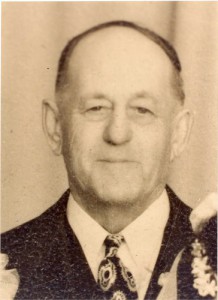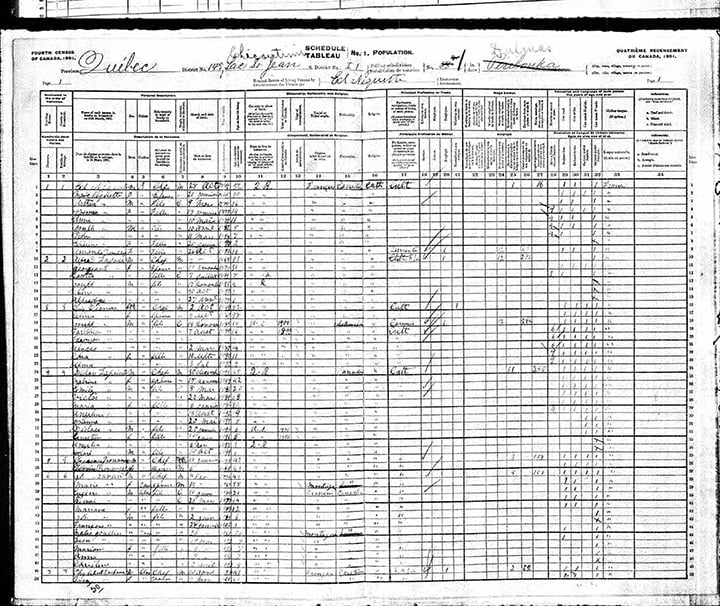Growing up in Waterville, Maine, with a large French-Canadian family, I was always interested in history—particularly the history of my family and hometown. Both my parents grew up in Waterville, their forebears having moved there from Canada and Northern Maine not long before. Having my memeres, my tantes, and many aunts and uncles living close by during my childhood allowed me to hear details of life in Waterville through the generations. Those details continue to give me a sense of roots that I especially appreciate now that I live in a much larger city.
Having a close-knit family has made it easier for my aunts and uncles to research and put together books on my father’s and mother’s paternal lines—tracing back to France through Quebec. My father’s maternal line— through his mother Stella (Dion) Labbe— proved increasingly difficult for my family to pinpoint on their own, however. Despite efforts by my father and my uncle, it seemed nearly impossible to validate family members past my great-grandfather Francis Dionne.
When I began working at NEHGS in 2014, I realized that staff experts might help me uncover questions relating to my Dionne family line. On a staff research night in October, I gathered what information I could from my father—mainly the names of his grandparents Francis Dionne and Ethel “Mary” Paradis and their place of residence, Stockholm, Maine. With this little bit of information, Chief Genealogist David Allen Lambert showed me how to track down their 1916 marriage license. From that document, as well-seasoned genealogists know, I was able to find the names of Francis’s parents, Louis Dionne and Celina Beaulieu. According to this document, both Louis and Celina were born in Canada and Louis was living in Lake St. Johns, Canada, at the time of the wedding. Unfortunately, the document also unveiled that Celina Beaulieu was deceased by 1916.Now that I’ve found this missing link, it will be much easier to find additional documents and continue to trace the family, most likely through Quebec.
The next step has been a bit more difficult. Celina and Louis Dionne were common names in Quebec in the nineteenth century; having Francis’s name significantly narrows the search but some couples with that name also had sons named Francis. One clue from my memere: her father Francis had a twin brother. It’s tidbits of information like this, often passed down only through recollection and oral history, that help narrow down potential documents. With the help of other staff members’ research, one Canadian census record has stood out. The 1901 Census of Canada lists Louis and Celina Dionne with twins, François and Fardinan, whose birth date (August 7, 1885) matches my great-grandfather’s. I would like to think that this is record is the answer, but first I need to review and potentially discard other census records with similar names residing in similar areas and then I can begin to search for previous generations. Whatever emerges from this research, I am beginning to understand more about the research process and genealogical resources—and the invaluable knowledge that skilled genealogists offer beginners like me.
Share this:
About Tricia Labbe
Tricia joined NEHGS in July of 2014. A recent graduate of Clark University with an MA and a BA in History, Tricia comes to NEHGS with several years of customer service and administrative experience. Some of her previous professional roles have been at the American Antiquarian Society, the People’s World Peace Project, Skinner Inc., and the Worcester Historical Museum. Tricia is very interested in both New England and immigration history and spent her undergraduate and graduate years researching the Acadian Deportation of 1755 - a topic closely tied to her own family history and Maine roots.View all posts by Tricia Labbe →

